Man is the only species that makes war against its own kind. Some situations, like the recent coronavirus outbreak, pit man against an invisible bug or microbe. But how often have we battled for survival against the plant world? It was once so, a gigantic plague covering an area equivalent to the present day United Kingdom. Come with me to the other side of the globe to witness one of the world’s scariest botanical invasions. The place is Australia, the time is the early 1900’s.
This is a massive incursion of the highest order, made worse by an historic drought. Originally fanning out from Sydney, most of Queensland and New South Wales eventually succumbs to the scourge. Starting slowly in backyards and paddocks, land is increasingly consumed by invasive prickly pear cactus—as much as 2.5 million acres per year by 1920! At its peak, sixty million acres are choked out. After a 2-decades plus onslaught, the tangled forest of cacti proves more expensive to remove than the land is worth. It has ravaged the landscape, bankrupted farmers and driven them from their homes in defeat.
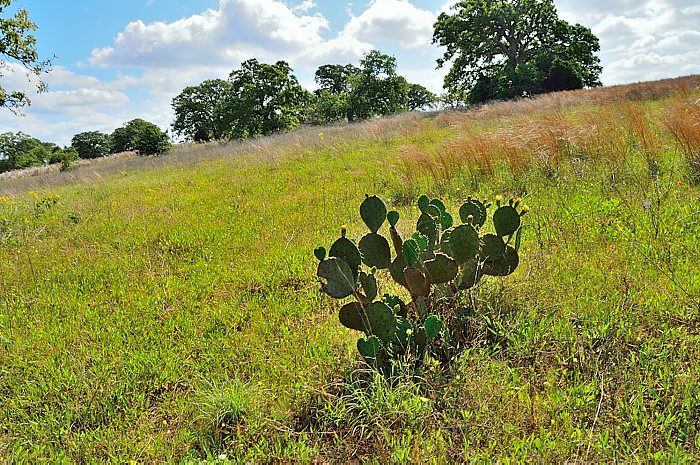
The Australian government was desperate, offering the equivalent of $1.3 million to anyone who could solve the problem, but nobody claimed it. Finally, scientists were dispatched to India, South Africa and the Americas to find a method of biological control. The tide turned in 1926 when a brown-grey parasitic moth (Cactoblastis cactorum) was brought back from Argentina. This moth solved the problem—but it also taught an ironic lesson about messing with Mother Nature. Without home country predators, the cactus moth became an invasive threat of its own. Even today, it remains a menace to prickly pear cactuses outside Argentina.
Cactus has fascinated us for centuries. Explorers to the New World returned with unusual plant specimens unlike anything botanists of the time had seen. While common in the Americas, the first cactus seen in Europe was said to be presented to Queen Isabella of Spain by Christopher Columbus. Today these spiky plants seem to be found all over the world. Cactus has been the nexus of a hate/love complex from the get-go. The Lewis and Clark expedition found many noxious things along the way but the cactus was a unique juxtaposition of pleasure and pain. On a mild early-summer day in 1805 Meriwether Lewis wrote: “The prickly pear is now in full blume (sic) and forms one of the beauties as well as the greatest pests of the plains.”
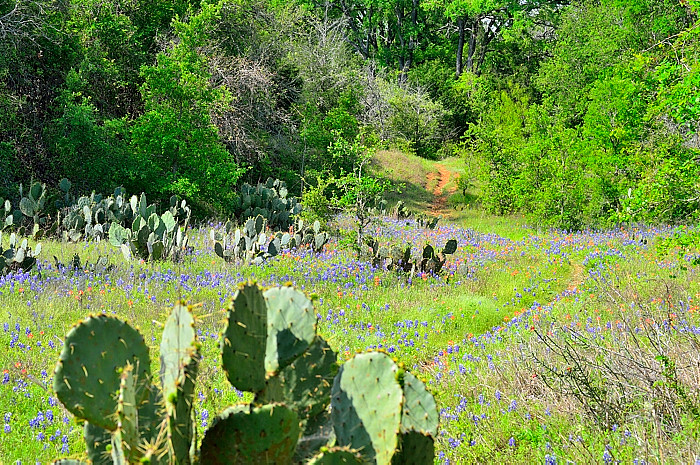
Cactus is one of the few English words known for being easygoing . . . the plural is expressed as cacti, cactuses or, even, just cactus. As a plant it’s prolific and diverse. Cacti vary greatly in size and general appearance, everything from button-like peyote and hedgehog cactus to the upright columns of barrel cacti. Perhaps the grandest example is a native of the Sonoran Desert—the gigantic saguaro cactus, with its thorny up-reaching arms, calling to the heavens. Nothing says “desert” like the shadow of an imposing saguaro silhouetted against the sun. Formally, cactus belongs to the family Cactaceae, an ancestral lineage that branches 127 times with some 1,750 known species of the order Caryophyllales. Cactuses today are protected in these U.S. national parks: Big Bend, Texas; Joshua Tree, California; and Saguaro, Arizona.
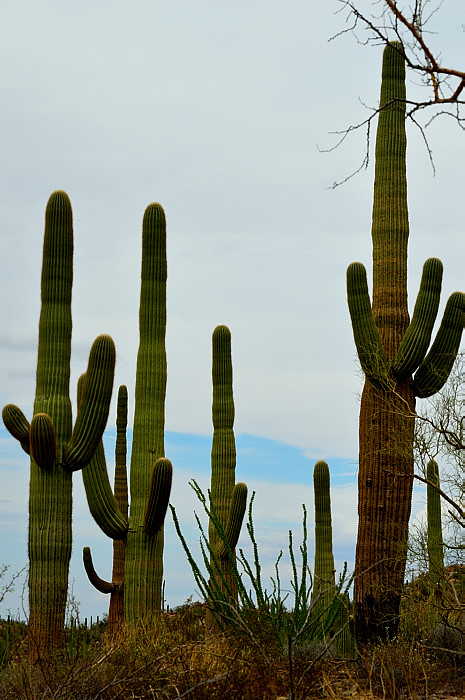
While we don’t know when cacti were first cultivated, we do know that dried buttons of peyote cacti found at a site on the Rio Grande in Texas were radiocarbon dated to between 3780-3660 BCE. The Aztecs (14th century) reserved a place for cactuses in their complex system of horticulture. Almost all fleshy cactus fruit is edible. The indigenous peoples of northwestern Mexico and the southwestern United States preserved the fruits of the giant saguaro by boiling and drying; they even produced alcohol from its fermented syrup. Other species of cactus (peyote in North America, San Pedro in South America) contain mescaline, a chemical “happy juice” that alters cognition and perception, and puts users in a partying mood. Among indigenous people, peyote is perceived as a way to access the spirit world and by the middle of the 20th century, peyote was being used regularly as far north as Canada.
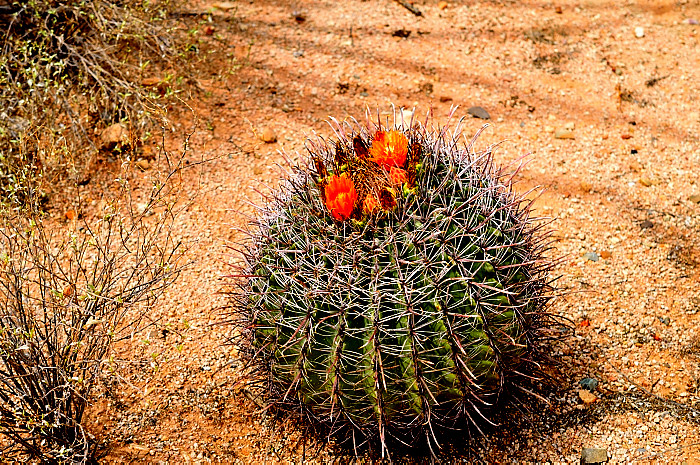
There’s one genus (Opuntia) in the cactus family that includes the Texas state plant—prickly pear cactus. Opuntia hybridizes easily, making identification difficult, often requiring DNA sequencing to define and identify variants or subtypes. Opuntia is named after the Ancient Greek city of Opus, where, according to Theophrastus, an edible plant grew that could be propagated by rooting its leaves. How weird is it that something with a Greek name is the official state plant symbol of Texas? Since the botanist who named it, Miller, was not a Texan, and since no cacti are native to Greece, it appears he simply found a Greek word to use. All members of the Opuntia genus were designated by the Texas legislature in 1995—but it’s commonly accepted they really just meant those subtypes with flat stems. Chollas cactus, also from the Opuntia genus, have cylindrical, jointed stems. So let’s talk about prickly pears.
Prickly pear occurs in Texas all the way from the hill country of Central Texas to the windswept plateaus and mountains of West Texas. The adaptable plant is often grown as forage for cattle and has helped the Texas cattle industry survive droughts. Like most true cactus species, prickly pears are native only to the Americas but they were introduced to other parts of the world too.
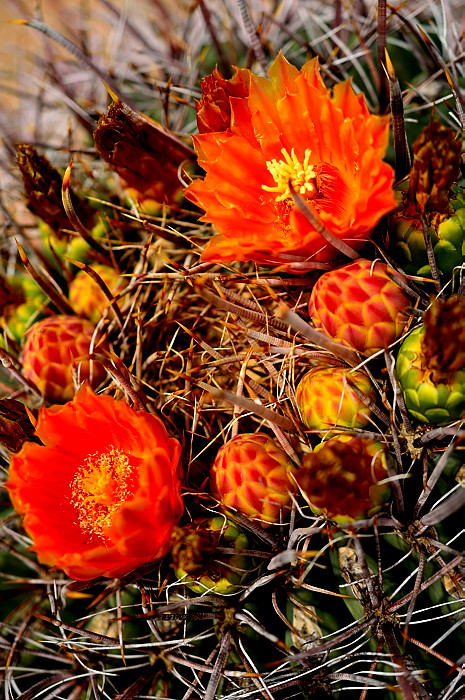
Prickly pear (mostly Opuntia stricta) was the primary antagonist in the takeover of Australian farm land cited earlier. It was originally imported in Australia to serve as natural agricultural fencing and to support the commercial dye industry (more on that later). Knowing what we know today, it’s easy to see how these benign purposes morphed into a “green hell.” As further testament to its nastiness, in the fall of 1961, Cuba had its troops plant an 8-mile barrier of Opuntia cactus along the northeastern section of a 17-mile fence surrounding the Guantanamo Bay Naval Base to stop Cubans from escaping to the United States.
Prickly pear is an unusual plant from a number of perspectives. The spines are actually highly modified leaves and they sprout from specialized structures called areoles, a kind of branch. Areoles produce the magnificent range of flowers cactuses are known for. Fleshy parts of the cactus are adapted for storing water but even spines help prevent water loss by reducing air flow close to the cactus and providing some shade. Prickly pear cacti have long periods of dormancy but they react quickly to any rainfall, thanks to an extensive but shallow root system which quickly sucks up any water it finds. Stems expand and contract to deal with quick water absorption or extended droughts.
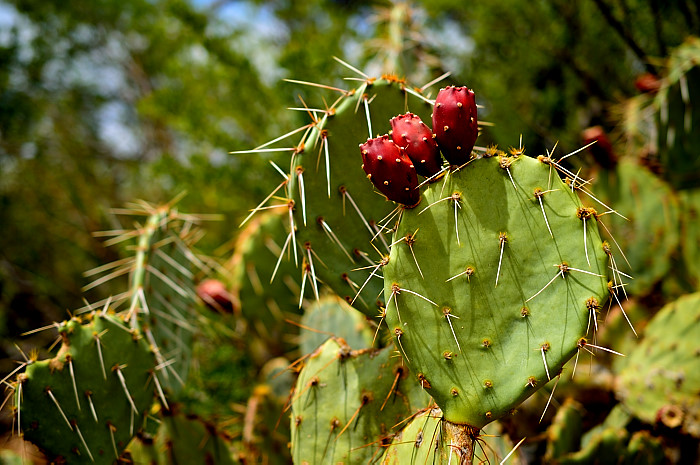
But here’s an especially creative adaption to conserve water: “crassulacean acid metabolism” (CAM). This is where water loss (transpiration) does not take place during the day (like most other plants) when photosynthesis does, but instead occurs at night when water loss is significantly reduced. The plant essentially stores carbon dioxide it takes in, retains it until daylight returns, and only then uses it in photosynthesis. Pretty amazing, huh?
Anyone who’s worked with prickly pear knows the plant does not suffer fools. Just above the regular spines, which are intimidating by themselves, are clusters of fine, tiny, barbed hairs called glochids. Disturb the cactus in any major way and these little “fishhooks” detach from the plant and attach themselves to YOU—your clothes, your hair, your skin, everything—to include inside your throat and lungs, if not careful. If you know what you’re doing though, prickly pear has many uses.
We already know it’s been used as barriers, fencing and cattle fodder. Prickly pear also feeds people. It’s actually farmed in parts of Mexico and Columbia. The pads, fruits and flowers are used in everything from salads and tacos to candies and jellies. Starbucks even makes a Prickly Pear Frappuccino! Hummingbirds and bees seek the flower nectar, jackrabbits, javelinas and other animals love the same parts people do. Some species, such as quail, rodents and reptiles, take shelter under the sharp spines. Cochineal is a red dye that comes from a parasitic insect that sometimes invades prickly pears, giving rise to a thriving dye industry some years ago. At one time, cochineal became Mexico’s second-most valued export after silver. Today it’s principally used as a red food coloring and for cosmetics.
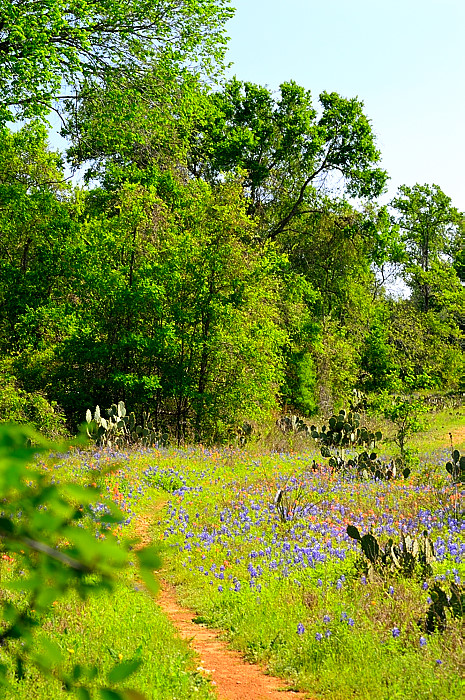
Clearly, cactus represents different things to different people. It can be beautiful, nourishing, healing, threatening, perilous or destructive. To some, this makes it as inscrutable as the dark side of the moon. Arguably, cactus remains a poster child for basic survival. It hunkers down in hard country and creatively adapts not only how it lives, but also how it serves others. Cactus thrives when times are good and hangs in there when they’re not: a fundamental core function for all life on earth.


